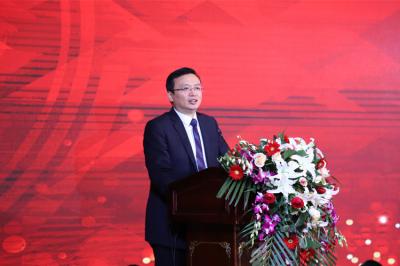Ceramic membranes are a type of inorganic membrane and belong to the solid membrane materials in membrane separation technology. They are primarily composed of various ceramic materials such as alumina, zirconia, titania, and silica, which are molded into different sizes and shapes with surface coating and high-temperature firing. Commercial ceramic membranes typically have a three-layer structure (porous support layer, transition layer, and separation layer) with an asymmetric distribution, and their pore sizes range from 0.8nm to 1μm, covering microfiltration, ultrafiltration, and nanofiltration levels.
As a widely used membrane separation technology, ceramic membranes have broad applications in the food, chemical, environmental protection, and pharmaceutical industries. However, fouling and pollution are inevitable during the use of ceramic membranes, which gradually reduce the membrane permeation flux and may cause clogging at any time. In recent years, various cleaning methods for removing ceramic membrane pollution have been proposed and can be broadly divided into two categories: physical methods and chemical methods.
Physical methods refer to methods that use liquid flow flushing or mechanical action to remove dirt. Common physical methods include backwashing, low-pressure and high-flow rate cleaning, negative pressure cleaning, and mechanical scraping. Specifically:
Backwashing: As a commonly used cleaning method, liquid or gas acts as a backwash carrier, exerting pressure against the permeating liquid direction of the ceramic membrane to allow the permeating liquid to act in reverse, cleaning the pollutants on the outer surface and in the pores of the membrane, and restoring the membrane flux.
Low-pressure and high-flow rate cleaning: This involves using low operating pressure to increase the flow rate of the liquid to reduce the possibility of solute molecules remaining on the membrane surface.
Negative pressure cleaning: This involves using vacuum suction to create negative pressure on both sides of the membrane, which achieves the effect of cleaning the pollutants inside and outside the membrane.
Mechanical scraping: This involves using soft foam balls and sponge balls as media to clean the inner surface of the membrane. The sponge balls are repeatedly cleaned with water pressure to remove impurities, which is an extremely effective method for removing dirt and is also suitable for cleaning organic gel impurities.
In order to maintain the original flux of the ceramic membrane during its use, physical cleaning alone is far from sufficient and must be combined with chemical cleaning to completely remove impurities and dirt. Chemical methods involve using chemicals to react with dirt to remove it. Since the materials processed by ceramic membranes are highly diverse and the substances adsorbed on the external surface of the ceramic membrane have significant differences in pollution levels, the selection of chemical cleaning agents should also be targeted to achieve the goal of cleaning the ceramic membrane.




 +86-25-58849045
+86-25-58849045
 +86-25-58749295
+86-25-58749295
 jiuwu@jiuwu.com
jiuwu@jiuwu.com
 No. 9 Park Road, Pukou District, Nanjing City (Sanqiao Factory)
No. 9 Park Road, Pukou District, Nanjing City (Sanqiao Factory) Call us on:
Call us on:  Email Us:
Email Us:  No. 9 Park Road, Pukou District, Nanjing City (Sanqiao Factory)
No. 9 Park Road, Pukou District, Nanjing City (Sanqiao Factory)

 English
English 한국어
한국어 français
français русский
русский Español
Español

